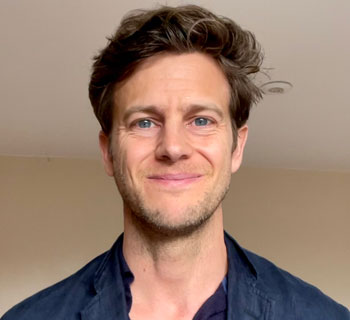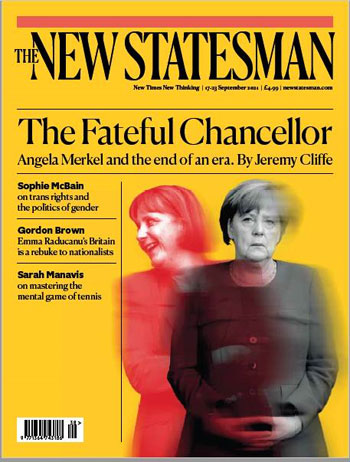
Plans for The New Statesman’s next phase of development, including overseas expansion, were developed hand in hand with its across the board redesign which, following its introduction in September, boosted traffic to the new-look website by 35-45% in just its first couple of weeks.
Work began last year on giving a simple refresh to www.newstatesman.com, which attracts, say the publishers, 2.6 million monthly unique visitors and has 300,000 registered users.
“We wanted to allow the text to breathe – to let the copy be the star, because the quality is so good, we really wanted to showcase it,” says Tom Young, The New Statesman’s head of digital.
So the team enlisted the help of renowned designer Mark Porter, whose highly acclaimed past work includes creating the design philosophy and style for The Guardian.
“He took a look and created a design system involving a new logo. It was so strong we thought we should run it across print and digital, and really overhaul things. What started as a digital redesign then led to a full redesign across the board,” Young adds.
Now, the title has two new fonts which are really clean, in print and online.

“As we’re not running programmatic advertising on the website, we are seeing good user experience. People are reading more pieces. And we are circulating readers better throughout the site, which is good,” he continues.
Similarly, the text is also now “breathing” in print, where current paid-for circulation stands at 36,000.
“There is real consistency between print and online now, so a reader can come in, read our newsletters, visit our website, open our magazine, and the same design system is in place throughout,” Young concludes.
Investment in the new design coincides with additional investment in content, audience, subscriptions, and marketing.
“We’ve been looking to expand for a while,” he explains. “The redesign provides a solid platform for growing The New Statesman further. As part of the investment plan, we began recruiting into roles in May/June this year and it’s gathered pace from there.”
By late October, eight new roles will have been added to the title’s soon-to-be 47-strong staff over the past twelve months. And it’s all about deepening reader engagement with The New Statesman’s content.
We think that there is an audience for a serious progressive title
Going global
Strengthening international coverage is one important focus.
“We think that there is an audience for a serious progressive title. We often think about The New Statesman sitting somewhere between The Atlantic and The Economist, and The Atlantic’s expansion has been incredible in the last year or so,” Young observes.
“One of the main priorities is the US, which we will focus on more – 30% of our audience at the moment is there, so that’s a logical next territory. Another is China, where we are relatively underserved. Also, Germany, where we covered the lead up to the German election in close detail.”
International audiences are always fascinated by how other titles in other countries view them and cover them, he notes. And this cuts both ways.
“When Annette Dittert, a German broadcaster, wrote a very good piece for us about Boris Johnson and the Tories, it got huge traffic because of interest in how a respected German broadcaster thought about us,” Young continues.
“What’s interesting about international coverage is the question of whether it’s about meeting international audiences’ interest in UK coverage, or international audiences’ interest in our perspective on international coverage. Or both.
“One of the things we are looking to do is explore further how you internationalise our UK political coverage for a US audience.”
Other areas of focus in coming months include deepening political content, building economics coverage and environment and sustainability content, and expanding comment and data journalism.

Then there’s subscription sales and marketing.
“Until now, growth has really been down to the quality of our writing and journalism. Subscriptions grew around 75% last year for digital and we haven’t had a subscriptions sales team. Some of the new investment will build and strengthen this function,” Young adds.
In October, Elise Johnson, currently head of social at the Telegraph, will join as head of audience to build a small audience team. “We have just recently integrated Pars.ley,” Young continues. “So, she will make sure those audience insights drive our commissioning more than it has been.”
Building group subscriptions – for academics in colleges or universities, for example – is another goal.
It’s all part of an emphasis on a mixture of paid subscriptions and high-value commercial partnerships, with AI-powered Lead Monitor technology delivering more tailored messages to readers from advertisers online, as the foundation for future revenue growth.
Though still early days, early indicators of the new direction of travel are encouraging.
“Initial feedback we’ve had is that the new look and feel really does elevate The New Statesman – especially the recent issue with Angela Merkel on the cover – in terms of what it says about where we’re taking The New Statesman,” Young says.
“It sets us up to be an international publication.”
This interview featured in the 30 September edition of our weekly e-newsletter, InPubWeekly, which you can register to receive here.










